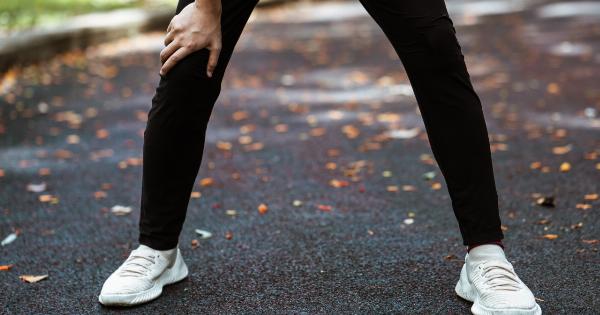An aneurysm is a bulge or weakening in the walls of a blood vessel, typically an artery, that can potentially rupture and cause serious health complications.
Aneurysm pain occurs when the bulging blood vessel puts pressure on surrounding tissues or nerves. While the risk factors for developing an aneurysm are well-known, such as high blood pressure, smoking, and a family history of aneurysms, there is limited research on whether certain movements can increase the risk of developing aneurysm pain.
Understanding Aneurysms and their Causes
Before delving into whether specific movements can increase the risk of aneurysm pain, it is important to understand how aneurysms develop and what causes them in the first place.
An aneurysm occurs when the walls of a blood vessel weaken, allowing it to balloon out and form a bulge. This weakening can be due to various factors, including:.
- High blood pressure: Constant elevated pressure within blood vessels can weaken their walls over time.
- Tobacco use: Smoking damages blood vessels and increases the risk of developing aneurysms.
- Family history: Aneurysms often run in families, suggesting a genetic predisposition.
- Age and gender: Aneurysms are more common in older adults and tend to affect men more frequently.
- Conditions like atherosclerosis: Certain health conditions, such as the buildup of fatty deposits in arteries, can contribute to the development of aneurysms.
The Impact of Movements on Aneurysms
While movements in general do not directly cause aneurysms, it is possible that certain movements can increase the risk of aneurysm pain by putting additional stress on weakened blood vessels.
However, it is important to note that no conclusive evidence exists that definitively links specific movements to an increased risk of aneurysm pain.
1. Heavy Lifting:.
One commonly debated movement is heavy lifting. Some argue that intense physical exertion and heavy lifting can potentially increase blood pressure, which may put strain on weakened blood vessels and increase the risk of an aneurysm rupture.
However, more research is needed to establish a definitive connection.
2. Strenuous Exercise:.
Engaging in high-intensity exercises that increase heart rate and blood pressure temporarily might theoretically pose a risk for those with aneurysms.
However, there is insufficient evidence to support a direct link between specific exercises or movements and an increased risk of aneurysm pain.
3. Deep Stretches:.
Deep stretches or extreme flexibility exercises sometimes raise concerns about aneurysm risk. These movements can place strain on blood vessels, potentially leading to rupture.
However, there is limited scientific evidence to support a significant association between deep stretching and an increased risk of aneurysm pain.
Preventing Aneurysm Pain
Regardless of the limited evidence regarding the impact of specific movements on aneurysm pain, it is important to prioritize overall aneurysm prevention and health maintenance. Here are some preventive measures:.
- Manage blood pressure: Regularly monitor and maintain blood pressure within a healthy range.
- Quit smoking: If you smoke, quitting is crucial for reducing the risk of aneurysm development.
- Lead a healthy lifestyle: Adopt a balanced diet, engage in regular physical activity, and maintain a healthy weight.
- Manage stress levels: Chronic stress can contribute to high blood pressure, so finding effective stress management techniques is crucial.
- Control underlying health conditions: Effectively manage conditions like diabetes, high cholesterol, and heart disease.
- Regular check-ups: Schedule routine medical examinations to detect any potential aneurysm.
Conclusion
While certain movements have been suggested as potential risk factors for aneurysm pain, the evidence linking them to an increased risk remains inconclusive.
It is essential to focus on the known risk factors for aneurysm development and prioritize preventive measures such as maintaining healthy blood pressure, quitting smoking, and leading an overall healthy lifestyle. Always consult a healthcare professional for personalized advice regarding aneurysm prevention, detection, and management.






























